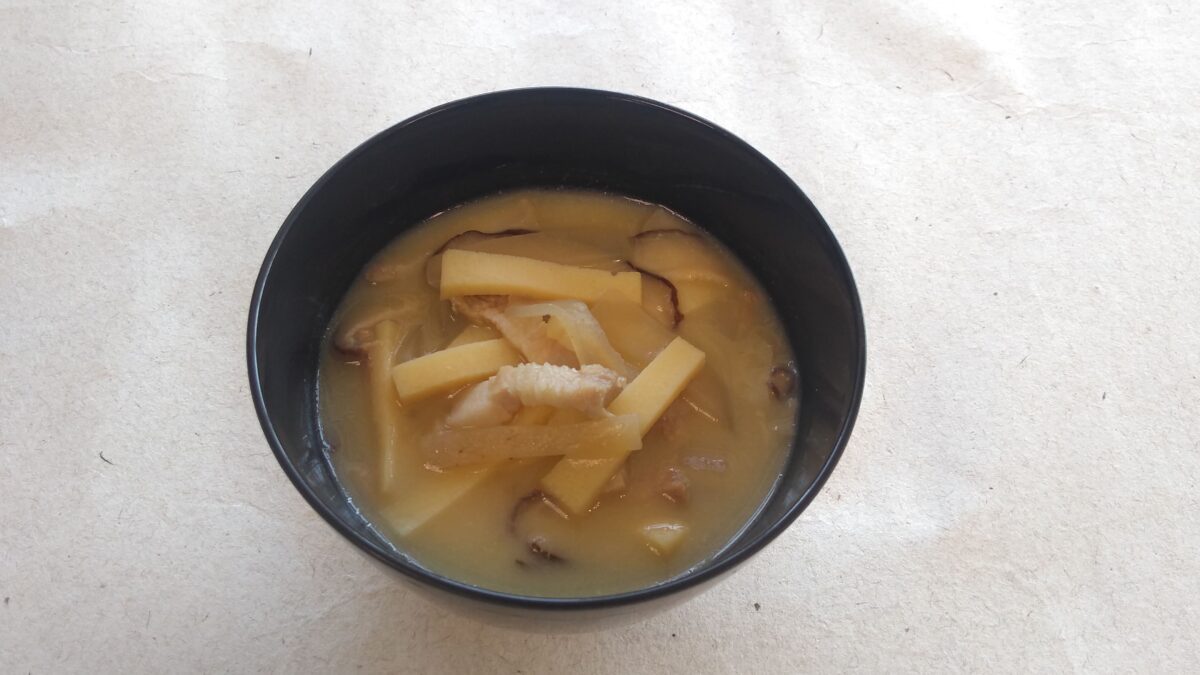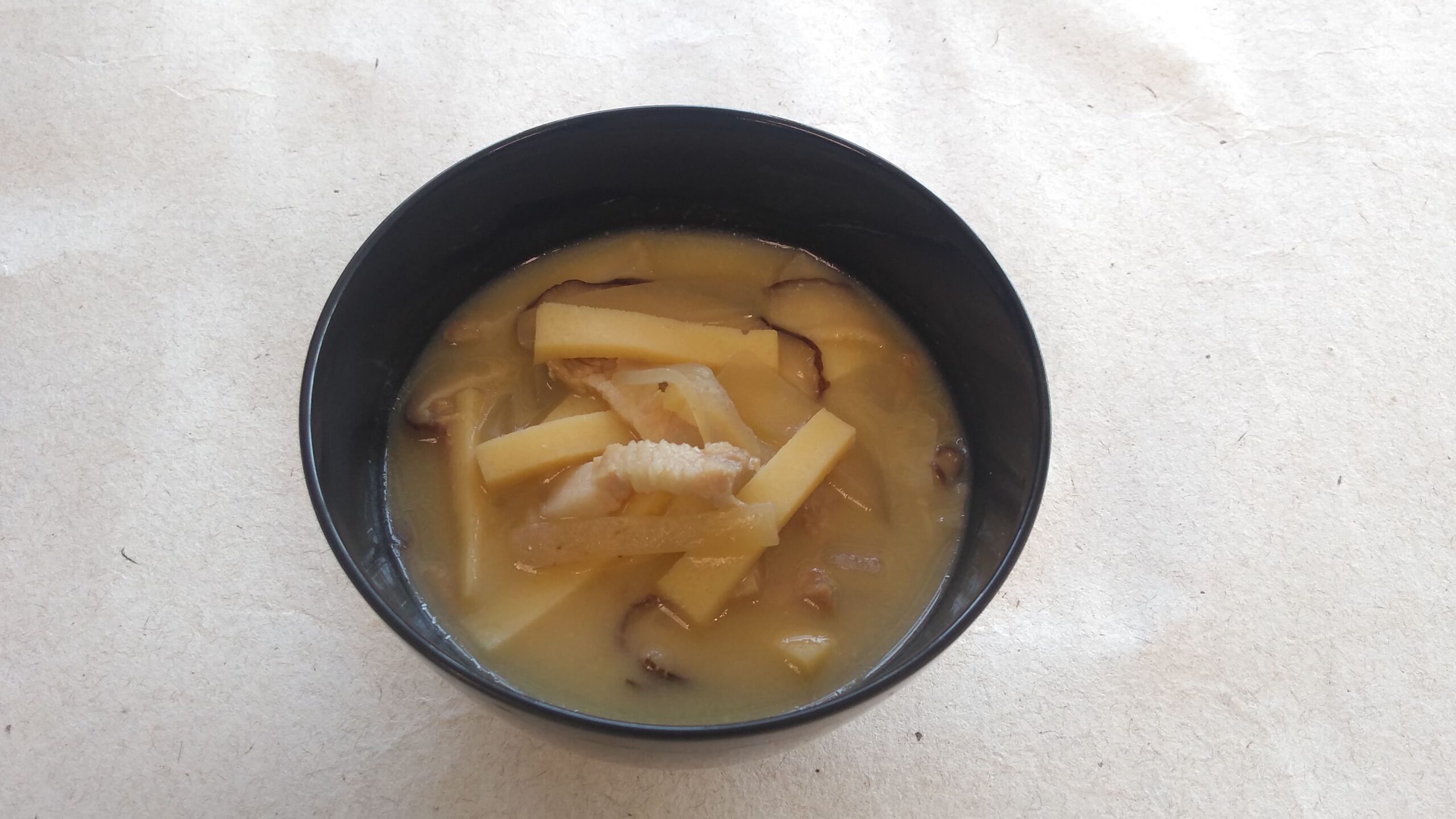
This flavorful and slightly sweet miso soup, known as “Inamuduchi,” is a beloved dish from Okinawa Prefecture. Interestingly, its name translates to “mock wild boar” because it was originally made with wild boar meat. Over time, as wild boar became less accessible, pork belly became the main ingredient, but the name stuck! Packed with ingredients like konnyaku (yam cake) and the distinctive Okinawan “kasutera kamaboko” (sweet fish cake), Inamuduchi is a rich and satisfying soup that’s often enjoyed on special occasions.
Dish Name: Inamuduchi
- Region / Location: Okinawa Prefecture, Japan
- Primary Area of Tradition: Throughout Okinawa Prefecture
- Main Ingredients: Pork belly
How It’s Eaten / Served
To prepare Inamuduchi, the pork belly is boiled whole and then cut into strips. Dried shiitake mushrooms are rehydrated, and konnyaku (yam cake), fried tofu pouches (aburaage), and the unique kasutera kamaboko (sweet fish cake) are also cut into similar strips. A broth made from a combination of pork and bonito dashi (soup stock) is brought to a boil with all the ingredients except the kamaboko. Finally, the kasutera kamaboko and sweet miso are added to season the soup. It’s important to adjust the amount of sweet miso to taste, as its saltiness can vary. Especially during colder months, thickening the soup slightly helps it retain heat, making it even more warming and delicious.
Cultural Background and Preservation
Inamuduchi is a dish deeply rooted in Okinawan celebratory traditions. Its origins can be traced back to the Ryukyu Kingdom era, where it was served as a celebratory dish, specifically as part of the first course of a five-tiered meal called “O-torimochi,” a formal banquet. The use of kasutera kamaboko, a high-quality steamed and fried fish cake made with a large amount of fish paste, further highlights its significance as a special occasion food. While Inamuduchi is commonly made in Okinawan households, it can also be found in local restaurants and is even served in school lunches during celebratory events like entrance and graduation ceremonies, as well as school anniversaries. Ready-made retort pouch versions are also available in supermarkets, making it accessible to many.
Additional information:
- Konnyaku: A jelly-like food made from the starch of the konjac plant. It has a chewy texture and is often used in Japanese stews and soups.
- Aburaage: Thin slices of tofu that have been deep-fried. They are often used as pouches to hold other ingredients or cut into strips and added to soups and stews.
- Kasutera Kamaboko: A unique type of fish cake from Okinawa that has a slightly sweet flavor and a texture similar to Japanese sponge cake (kasutera). It’s a prized ingredient in Okinawan cuisine.
- Dashi: A Japanese soup stock that forms the base for many dishes. In the case of Inamuduchi, it’s a combination of pork-based and bonito (fish)-based stocks.
- Sweet Miso (Ama Miso): A type of fermented soybean paste that has a sweeter and milder flavor compared to other types of miso. It’s a key seasoning in Inamuduchi.
The information about regional cuisine featured on this website (Piggy's Grandma of Japan) is summarized and adapted from the Ministry of Agriculture, Forestry and Fisheries of Japan (MAFF) website, "Our Regional Cuisines"Additional commentary is provided based on the unique experiences and perspectives of the site's editors.
The copyright for the original content regarding regional cuisine belongs to the Ministry of Agriculture, Forestry and Fisheries of Japan.
The summaries and adaptations published on this site are intended for informational purposes only. Piggy's Grandma of Japan does not guarantee the accuracy or completeness of this information. For the most accurate and complete details, please refer to the original pages on the MAFF website.


